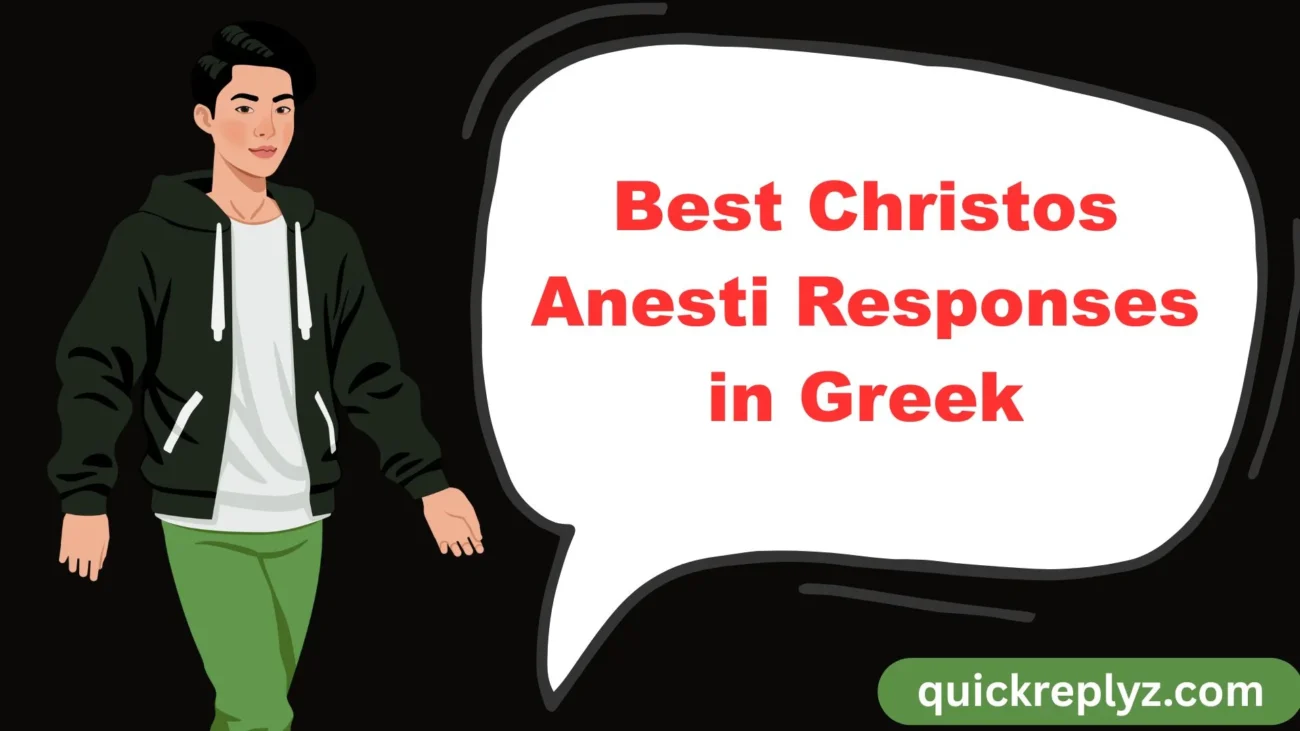The joyous Easter greeting “Christos Anesti” (Χριστός Ανέστη) is a cherished tradition in Greek Orthodox culture, meaning “Christ is Risen”. It carries deep religious, cultural, and emotional significance, uniting people in celebration of the Resurrection.
Responding to “Christos Anesti” with warmth and authenticity is more than just polite—it’s a way to share in the joy of the season. In this guide, we explore the 30 best Christos Anesti responses in Greek, each paired with context, usage tips, and examples to help you engage meaningfully.
Whether you’re a native speaker or learning Greek, these responses will enrich your Easter conversations.
Another or Professional Way to Says Christos Anesti Responses in Greek
- Alithos Anesti (Αληθώς Ανέστη)
- Ontos Anesti (Όντως Ανέστη)
- Evlogiménos (Ευλογημένος)
- Me Chará (Με Χαρά)
- Dóxa Tō Theō (Δόξα τῷ Θεῷ)
- Alithinos Anesti (Αληθινός Ανέστη)
- Zoi kai Fos (Ζωή και Φως)
- Eirini Pasi (Εἰρήνη Πᾶσι)
- Chará Megáli (Χαρά Μεγάλη)
- Anastasis Zois (Ανάσταση Ζωής)
- Eulogia Kyriou (Εὐλογία Κυρίου)
- Metá Harás (Μετά Χαράς)
- Pantos Kalá (Πάντως Καλά)
- Phos Christou (Φως Χριστού)
- Eis Tous Aionas (Εἰς τοὺς Αἰῶνας)
- Christos Anesti, Filé Mou (Χριστός Ανέστη, φίλε μου)
- Zito I Anastasi (Ζήτω η Ανάσταση)
- Hara kai Eirini (Χαρά και Εἰρήνη)
- Polla Efti (Πολλά Ευτυχί)
- Kai Panta Fos (Και πάντα φως)
- Zoi Panta (Ζωή πάντα)
- Efharisto Tō Theo (Ευχαριστώ τῷ Θεῷ)
- Panta Kalos Logos (Πάντα καλός λόγος)
- Anastasi kai Agapi (Ανάσταση και Αγάπη)
- Me Tin Evlogia Tou Theou (Με την ευλογία του Θεού)
- Anesti o Kyrios (Ανέστη ο Κύριος)
- Panta Eirini (Πάντα Εἰρήνη)
- Eleni kai Fos (Ἑλπίδα και Φως)
- Hara Tis Zois (Χαρά της Ζωής)
- Panta Agapi (Πάντα Αγάπη)
1. Alithos Anesti (Αληθώς Ανέστη)
A timeless and traditional reply meaning “Truly, He is Risen”, this is the most common and widely accepted response to “Christos Anesti.” It carries a sense of shared faith and unity. Often exchanged between friends, family, and even strangers during the Easter period, it reinforces the joyous message of the Resurrection.
Example and Best Use:
- Example: Person A: “Χριστός Ανέστη!” Person B: “Αληθώς Ανέστη!”
- Best Use: Use in any formal or informal setting—it’s universally recognized.
2. Ontos Anesti (Όντως Ανέστη)
Literally meaning “Indeed, He is Risen”, this phrase adds a tone of sincerity and conviction. It’s slightly less common but still warmly received. Ideal for those moments when you wish to emphasize your heartfelt agreement with the Easter proclamation.
Example and Best Use:
- Example: Person A: “Χριστός Ανέστη!” Person B: “Όντως Ανέστη!”
- Best Use: Great for conversations in church or among devout Orthodox Christians.
3. Evlogiménos (Ευλογημένος)
Meaning “Blessed”, this word can be used as a joyful acknowledgment of the greeting, often accompanied by a smile. While not a direct translation, it reflects the blessing of Easter and God’s grace.
Example and Best Use:
- Example: Person A: “Χριστός Ανέστη!” Person B: “Ευλογημένος!”
- Best Use: Works beautifully when paired with a hug or handshake during Easter visits.
4. Me Chará (Με Χαρά)
Translating to “With Joy”, this is a warm and uplifting way to respond, emphasizing the happiness of the Resurrection. Perfect for close friends and family members when you want your response to feel personal.
Example and Best Use:
- Example: Person A: “Χριστός Ανέστη!” Person B: “Με Χαρά!”
- Best Use: Use at family gatherings or with children to highlight the joy of Easter.
5. Dóxa Tō Theō (Δόξα τῷ Θεῷ)
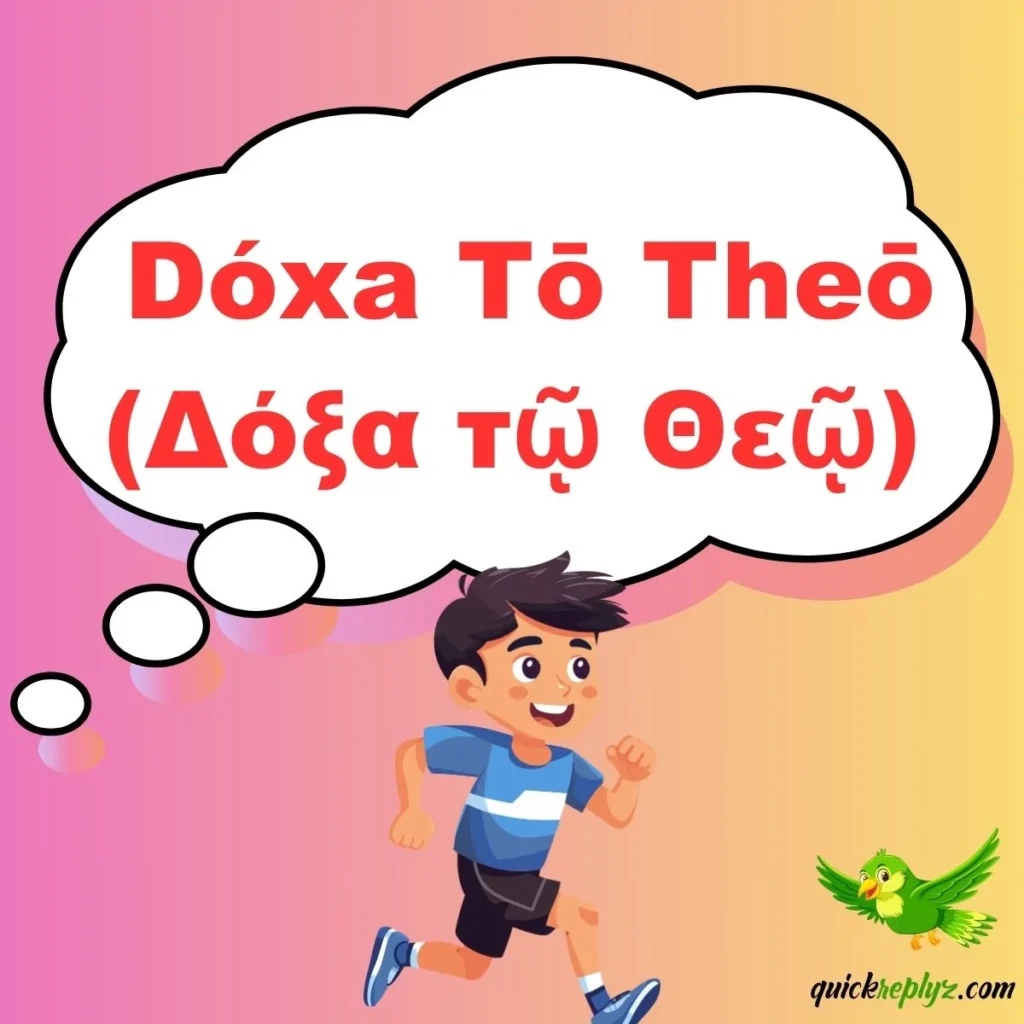
Meaning “Glory to God”, this response connects the Resurrection directly to gratitude and worship. It’s a reverent and powerful acknowledgment of the Easter message.
Example and Best Use:
- Example: Person A: “Χριστός Ανέστη!” Person B: “Δόξα τῷ Θεῷ!”
- Best Use: Ideal for formal church settings or when speaking with clergy
6. Alithinos Anesti (Αληθινός Ανέστη)
This variation means “He has truly risen” and adds a poetic twist to the traditional reply. While “Alithos Anesti” is more standard, “Alithinos Anesti” feels a touch more personal and is sometimes used in rural areas or by older generations. It emphasizes the truthfulness of the Resurrection story.
Example and Best Use:
- Example: A: “Χριστός Ανέστη!” B: “Αληθινός Ανέστη!”
- Best Use: Ideal for speaking with elders or in cultural storytelling settings.
7. Zoi kai Fos (Ζωή και Φως)
Meaning “Life and Light”, this phrase encapsulates the spiritual symbolism of Easter. It’s a heartfelt way to reflect on the hope, renewal, and divine light that Christ’s Resurrection brings.
Example and Best Use:
- Example: A: “Χριστός Ανέστη!” B: “Ζωή και Φως!”
- Best Use: Perfect for church sermons or religious social media captions during Pascha.
8. Eirini Pasi (Εἰρήνη Πᾶσι)
Translated as “Peace to all”, this greeting-response shifts the focus from the event to the blessing it brings. It is particularly impactful when wishing peace and goodwill to the whole community.
Example and Best Use:
- Example: A: “Χριστός Ανέστη!” B: “Εἰρήνη Πᾶσι!”
- Best Use: Excellent in formal church settings or interfaith dialogues during Easter.
9. Chará Megáli (Χαρά Μεγάλη)
Meaning “Great Joy”, this reply is bright and expressive, emphasizing the emotional impact of the Resurrection. It works well to show genuine excitement and shared celebration.
Example and Best Use:
- Example: A: “Χριστός Ανέστη!” B: “Χαρά Μεγάλη!”
- Best Use: Great in casual, festive gatherings with friends and extended family.
10. Anastasis Zois (Ανάσταση Ζωής)
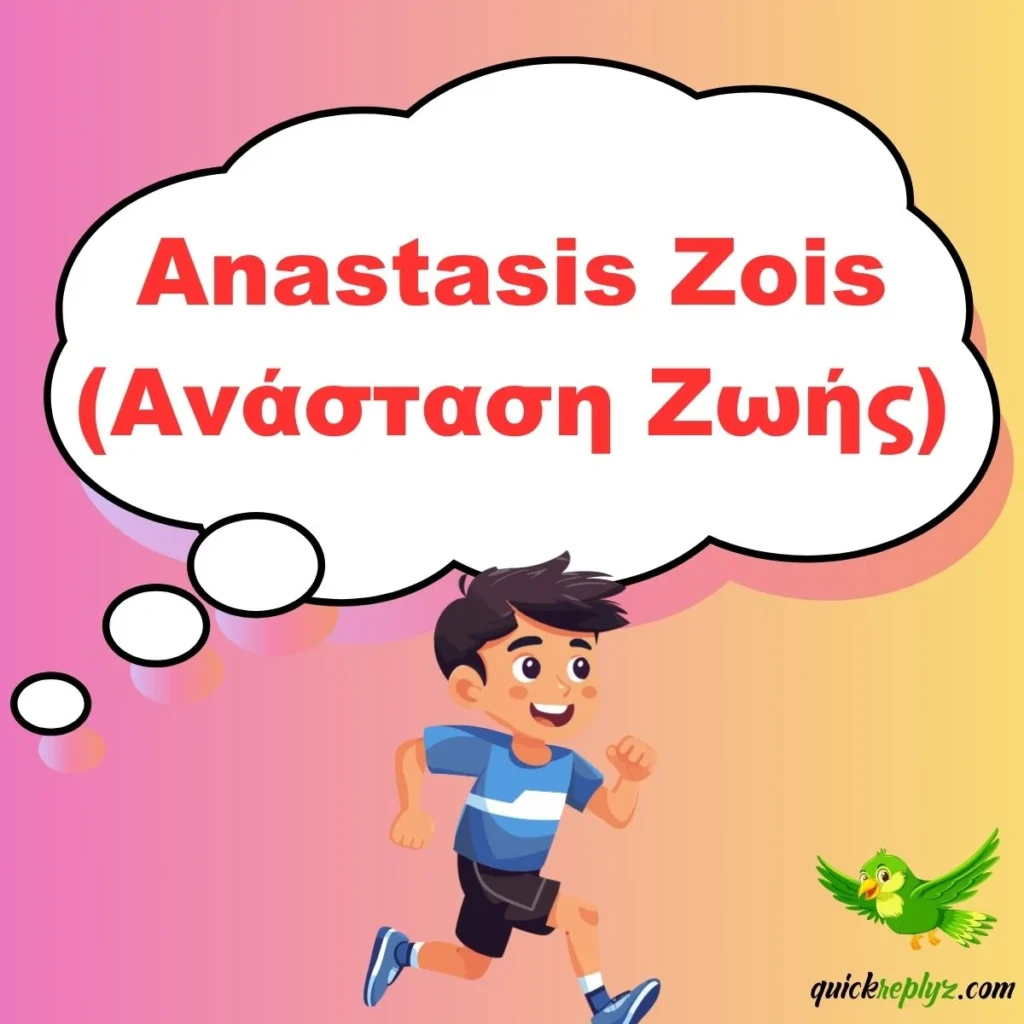
This phrase translates to “Resurrection of Life”, emphasizing the eternal life promised in Christian belief. It’s a theological yet warm response that carries deep meaning.
Example and Best Use:
- Example: A: “Χριστός Ανέστη!” B: “Ανάσταση Ζωής!”
- Best Use: Suitable for spiritual discussions or Bible study groups around Easter.
11. Eulogia Kyriou (Εὐλογία Κυρίου)
Meaning “Blessing of the Lord”, this reply conveys gratitude for divine grace. It’s particularly fitting for people with strong religious devotion.
Example and Best Use:
- Example: A: “Χριστός Ανέστη!” B: “Εὐλογία Κυρίου!”
- Best Use: Ideal when speaking with priests or devout members of the congregation.
12. Metá Harás (Μετά Χαράς)
This formal Greek expression means “With Joy”, similar to “Me Chará” but in a more classical tone. It conveys a polite and uplifting response.
Example and Best Use:
- Example: A: “Χριστός Ανέστη!” B: “Μετά Χαράς!”
- Best Use: Perfect for official Easter letters, cards, or formal speeches.
13. Pantos Kalá (Πάντως Καλά)
Translated as “Always well”, this phrase turns the greeting into a blessing for ongoing well-being, inspired by the joy of Easter.
Example and Best Use:
- Example: A: “Χριστός Ανέστη!” B: “Πάντως Καλά!”
- Best Use: Great for casual conversation with neighbors or acquaintances.
14. Phos Christou (Φως Χριστού)
Meaning “Light of Christ”, this phrase reflects a central Christian belief in Christ as the guiding light for humanity.
Example and Best Use:
- Example: A: “Χριστός Ανέστη!” B: “Φως Χριστού!”
- Best Use: Works beautifully in church services and Easter candlelight vigils.
15. Eis Tous Aionas (Εἰς τοὺς Αἰῶνας)
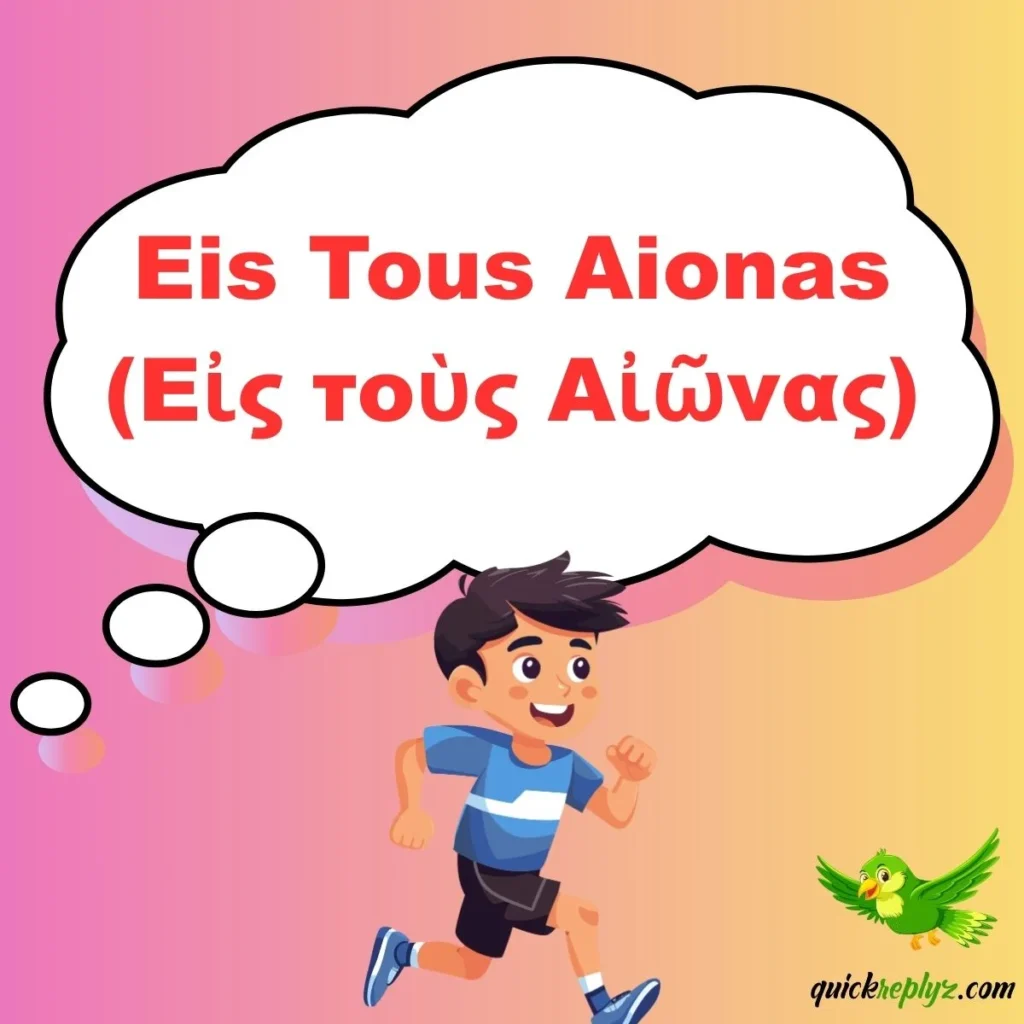
This expression means “Unto the ages” and is a poetic way to acknowledge the eternal truth of the Resurrection.
Example and Best Use:
- Example: A: “Χριστός Ανέστη!” B: “Εἰς τοὺς Αἰῶνας!”
- Best Use: Ideal for formal liturgical contexts and sermons.
16. Christos Anesti, Filé Mou (Χριστός Ανέστη, φίλε μου)
Adding “my friend” makes the reply warmer and more personal. It blends tradition with affection.
Example and Best Use:
- Example: A: “Χριστός Ανέστη!” B: “Χριστός Ανέστη, φίλε μου!”
- Best Use: For close friends or relatives when you want to make it personal.
17. Zito I Anastasi (Ζήτω η Ανάσταση)
Meaning “Long live the Resurrection”, this has a celebratory and almost rally-like tone, perfect for large gatherings.
Example and Best Use:
- Example: A: “Χριστός Ανέστη!” B: “Ζήτω η Ανάσταση!”
- Best Use: Excellent in community Easter festivals or youth group celebrations.
18. Hara kai Eirini (Χαρά και Εἰρήνη)
This translates to “Joy and Peace” and expresses the blessings that Easter brings.
Example and Best Use:
- Example: A: “Χριστός Ανέστη!” B: “Χαρά και Εἰρήνη!”
- Best Use: Ideal for family settings or when speaking to children.
19. Polla Efti (Πολλά Ευτυχί)
Meaning “Much happiness”, this is a cheerful, modern-style response that still fits the Easter spirit.
Example and Best Use:
- Example: A: “Χριστός Ανέστη!” B: “Πολλά Ευτυχί!”
- Best Use: Suitable for informal text messages or social media comments.
20. Kai Panta Fos (Και πάντα φως)
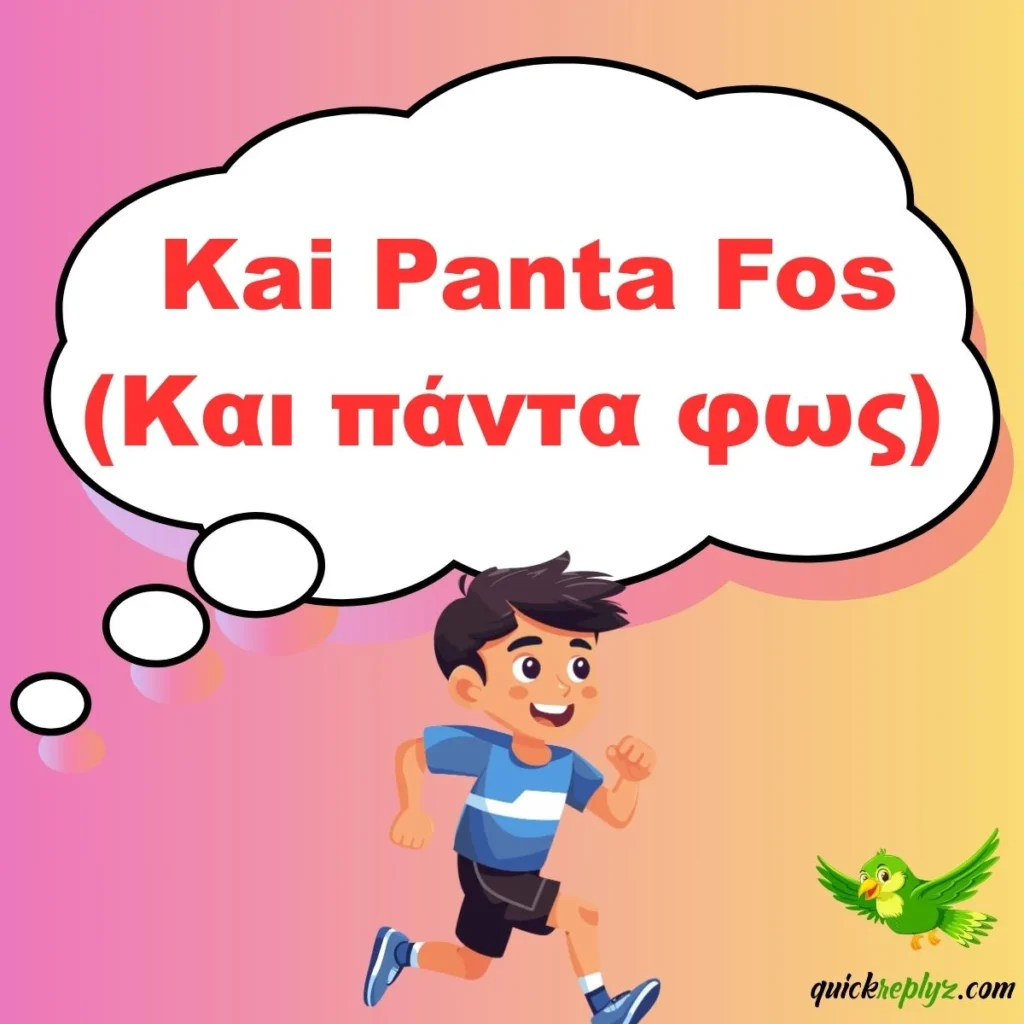
Meaning “And always light”, this poetic response connects Easter with the ongoing presence of divine light.
Example and Best Use:
- Example: A: “Χριστός Ανέστη!” B: “Και πάντα φως!”
- Best Use: Perfect for Easter night candle ceremonies.
21. Zoi Panta (Ζωή πάντα)
Meaning “Life always”, this short and memorable reply emphasizes eternal life in Christ.
Example and Best Use:
- Example: A: “Χριστός Ανέστη!” B: “Ζωή πάντα!”
- Best Use: Works in both casual and church settings.
22. Efharisto Tō Theo (Ευχαριστώ τῷ Θεῷ)
Meaning “Thank God”, this expression adds a personal note of gratitude to the Resurrection greeting.
Example and Best Use:
- Example: A: “Χριστός Ανέστη!” B: “Ευχαριστώ τῷ Θεῷ!”
- Best Use: Ideal when speaking about blessings during Easter meals.
23. Panta Kalos Logos (Πάντα καλός λόγος)
Meaning “Always good news”, this response highlights Easter as the ultimate message of hope.
Example and Best Use:
- Example: A: “Χριστός Ανέστη!” B: “Πάντα καλός λόγος!”
- Best Use: Perfect for sermon openings or Easter newsletters.
24. Anastasi kai Agapi (Ανάσταση και Αγάπη)
Meaning “Resurrection and Love”, this connects Easter with the love that underpins Christian faith.
Example and Best Use:
- Example: A: “Χριστός Ανέστη!” B: “Ανάσταση και Αγάπη!”
- Best Use: For close, heartfelt exchanges with family members.
25. Me Tin Evlogia Tou Theou (Με την ευλογία του Θεού)
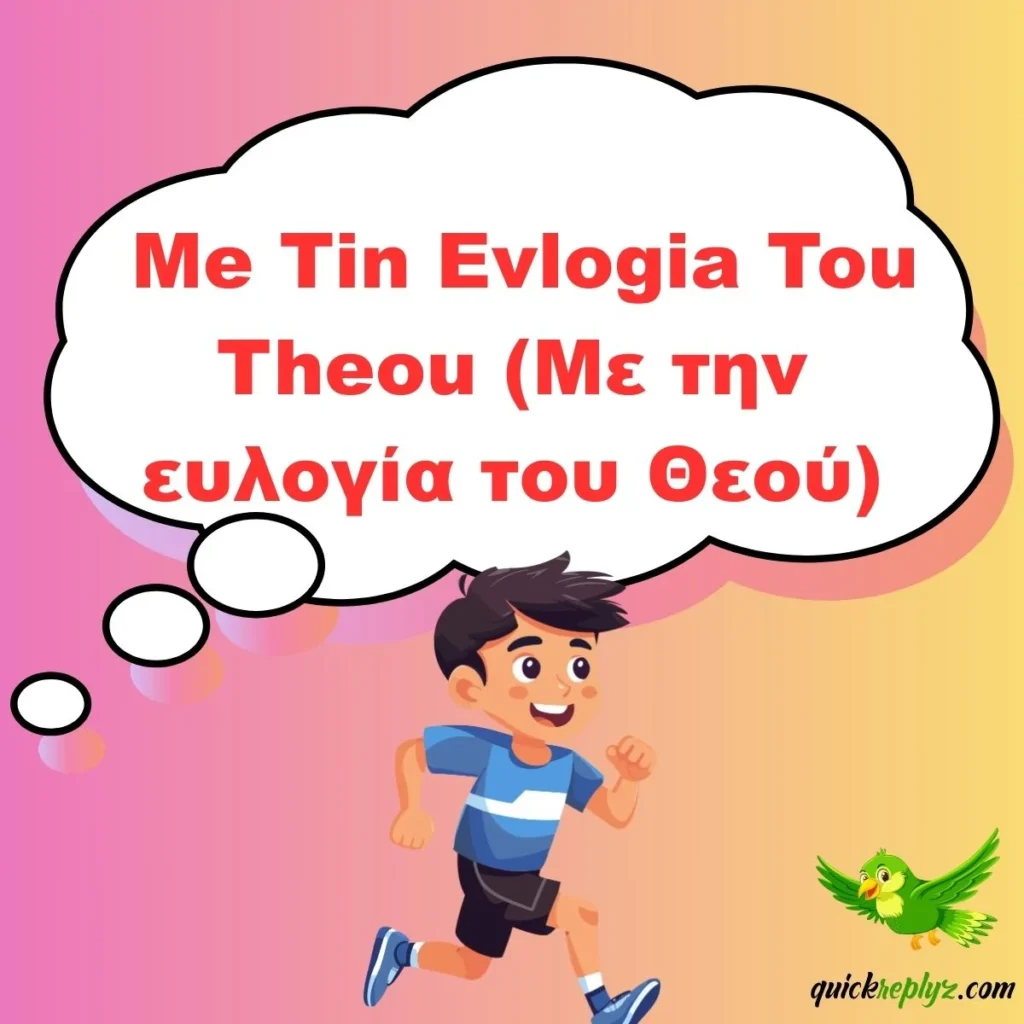
This means “With the blessing of God” and gives a formal, respectful response.
Example and Best Use:
- Example: A: “Χριστός Ανέστη!” B: “Με την ευλογία του Θεού!”
- Best Use: Excellent for speaking to elders or clergy.
- Also Read This :30 Best Responses to ‘I Am Flattered’
26. Anesti o Kyrios (Ανέστη ο Κύριος)
Meaning “The Lord is risen”, this is a direct proclamation that mirrors the original greeting.
Example and Best Use:
- Example: A: “Χριστός Ανέστη!” B: “Ανέστη ο Κύριος!”
- Best Use: Suitable for church liturgy and religious readings.
27. Panta Eirini (Πάντα Εἰρήνη)
Meaning “Always peace”, this focuses on the lasting peace that Easter symbolizes.
Example and Best Use:
- Example: A: “Χριστός Ανέστη!” B: “Πάντα Εἰρήνη!”
- Best Use: Appropriate for humanitarian messages during Pascha.
28. Eleni kai Fos (Ἑλπίδα και Φως)
Meaning “Hope and Light”, this is both spiritual and uplifting, focusing on renewal.
Example and Best Use:
- Example: A: “Χριστός Ανέστη!” B: “Ἑλπίδα και Φως!”
- Best Use: Great for Easter-themed greeting cards.
29. Hara Tis Zois (Χαρά της Ζωής)
Meaning “Joy of Life”, this highlights the life-giving joy of the Resurrection.
Example and Best Use:
- Example: A: “Χριστός Ανέστη!” B: “Χαρά της Ζωής!”
- Best Use: Ideal for festive Easter Sunday lunches.
30. Panta Agapi (Πάντα Αγάπη)
Meaning “Always love”, this is a warm, universal Easter wish that transcends cultures.
Example and Best Use:
- Example: A: “Χριστός Ανέστη!” B: “Πάντα Αγάπη!”
- Best Use: Perfect for ending Easter conversations on a loving note.
Conclusion
The greeting “Christos Anesti” is more than a phrase—it’s a heartfelt tradition that connects people through faith, joy, and hope. By learning these 30 best Christos Anesti responses in Greek, you not only honor the language but also the deep cultural and spiritual significance behind it. Whether you choose the classic “Alithos Anesti” or a more poetic variation, each response keeps the Easter spirit alive and strengthens the bonds between people.
FAQs
Q1: What does “Christos Anesti” mean? A: It means “Christ is Risen” in Greek, a common Easter greeting in Orthodox Christianity.
Q2: What is the most common response? A: “Alithos Anesti” (“Truly, He is Risen”) is the standard and most widely used reply.
Q3: Can I use these responses outside of Greece? A: Yes, these greetings are used worldwide among Greek Orthodox communities.
Q4: Are these phrases only for church? A: No, they can be used in homes, community gatherings, online, and in everyday Easter conversations.
Q5: Do these responses have to be in Greek? A: Traditionally, yes, but you can also share their meaning in English for non-Greek speakers.

